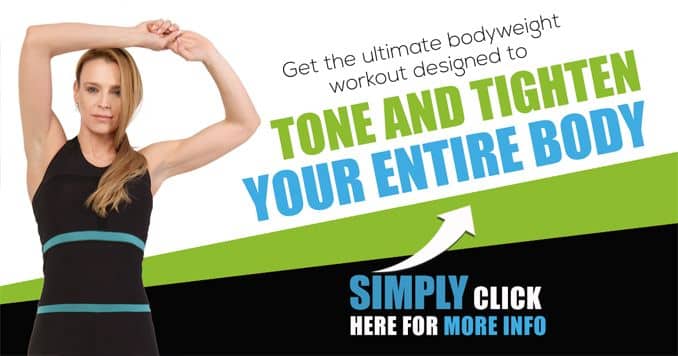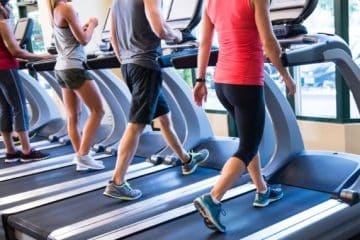Strength Workout for Beginners
Starting a strength training program can be daunting, but it doesn't have to be a hard workout for beginners and seniors. You can begin your way to a more muscular, healthier self with some planning and knowledge. Firstly, you must determine your objectives. Do you want to gain muscle, tone up, or become more muscular? Once you have decided on your goal, you can begin planning your workout. Begin with two or three days of strength training per week and focus on compound exercises that work on multiple muscle groups.
As you become more familiar with strength training, you can add more activities and lift heavier weights. Be careful not to overeat quantity over quality, and always listen to your body. If you feel discomfort or pain, take a break or lower the intensity of your workouts. Strength training makes a substantial body and good health possible, so feel free to start.
These simple strength workouts for beginners and seniors are the ones to try if you're a beginner!
1. Wall Plank Reach
Begin in an upright standing position with your hands against the wall. Move your feet back to increase the angle of your body, keeping your head, shoulders, hips, and legs in alignment. Tighten your core, then reach one hand overhead, following with your opposite hand. Repeat the movement, alternating hands.
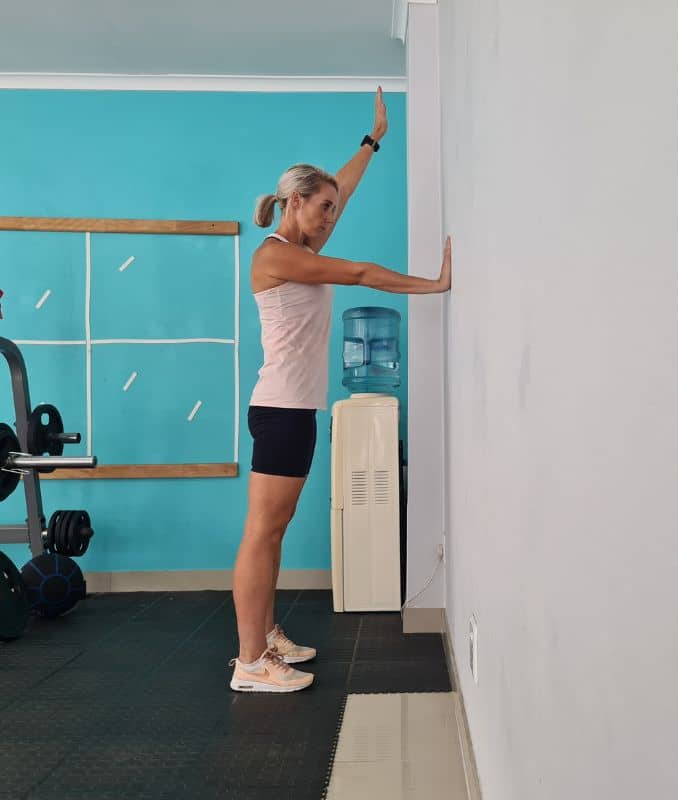 |
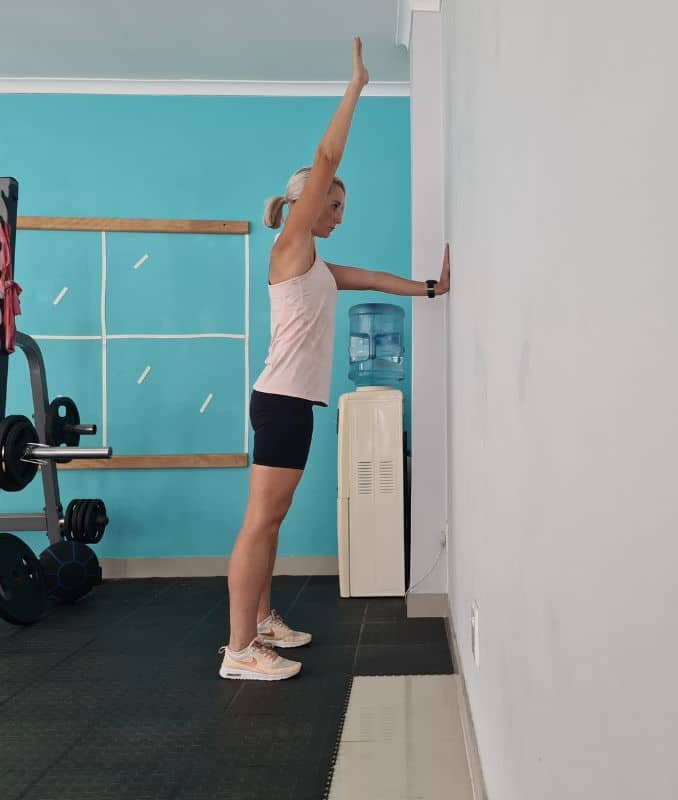 |
Wall Plank Reach
Start with 1 set of 5-10 repetitions on each side.
Progression Exercise
Variation 1: Plank from Knees with Reach
Begin in a 4–point position, with your knees under your hips and your hands beneath your shoulders. Move into a plank position, maintaining good alignment with your head, shoulders, hips, and knees. Tighten your core, then reach forward with one arm, following with your opposite arm. Repeat the movement, alternating arms.
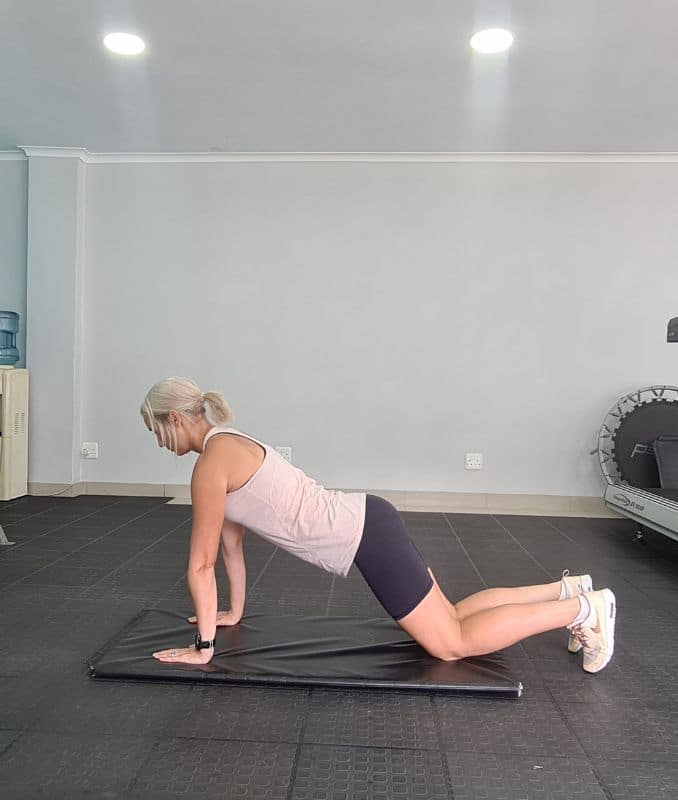 |
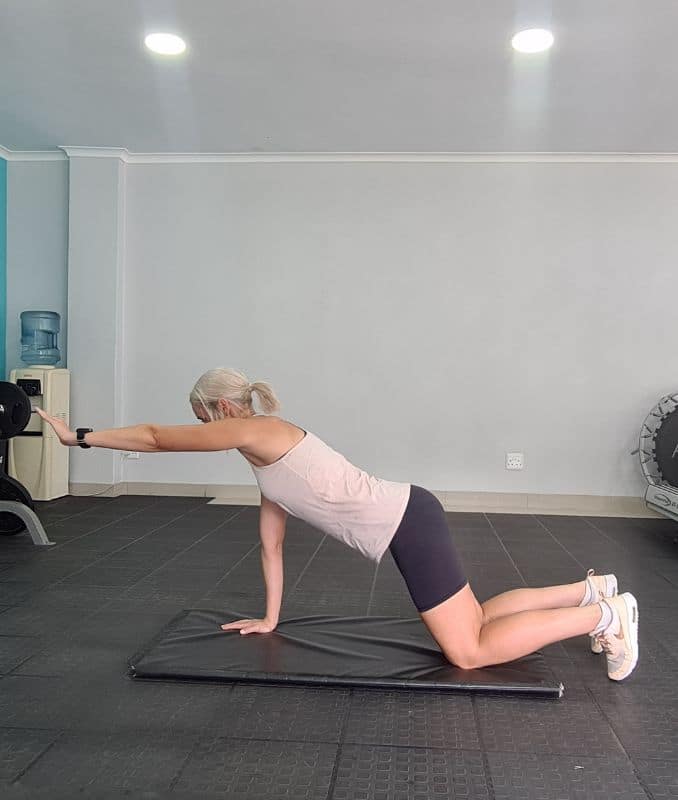 |
Plank from Knees with Reach
Variation 2: Full Plank with Reach
Begin in a 4–point position, with your knees under your hips and your hands beneath your shoulders. Move into a full plank position, maintaining good alignment with your head, shoulders, hips, and toes. Tighten your core, then reach forward with one arm, following with your opposite arm. Repeat the movement, alternating arms.
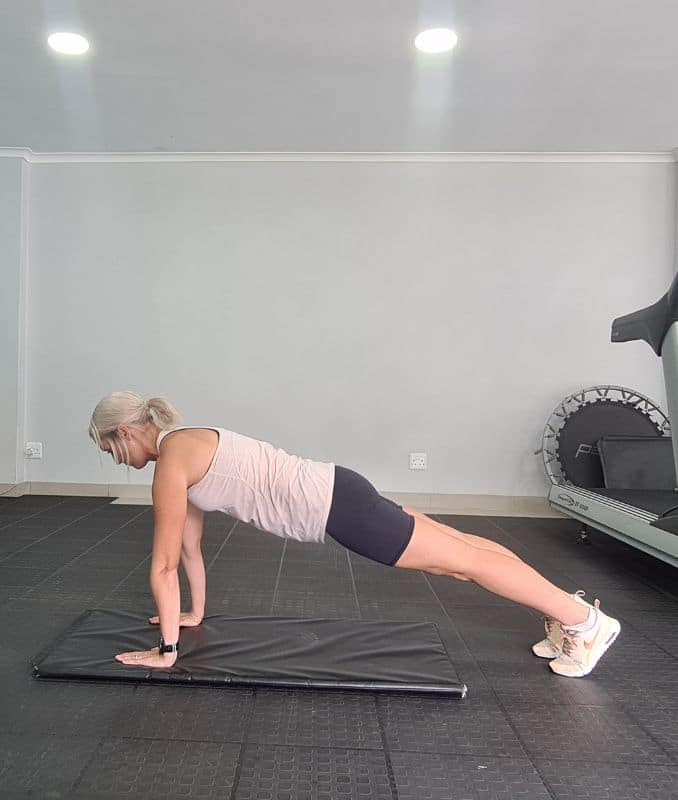 |
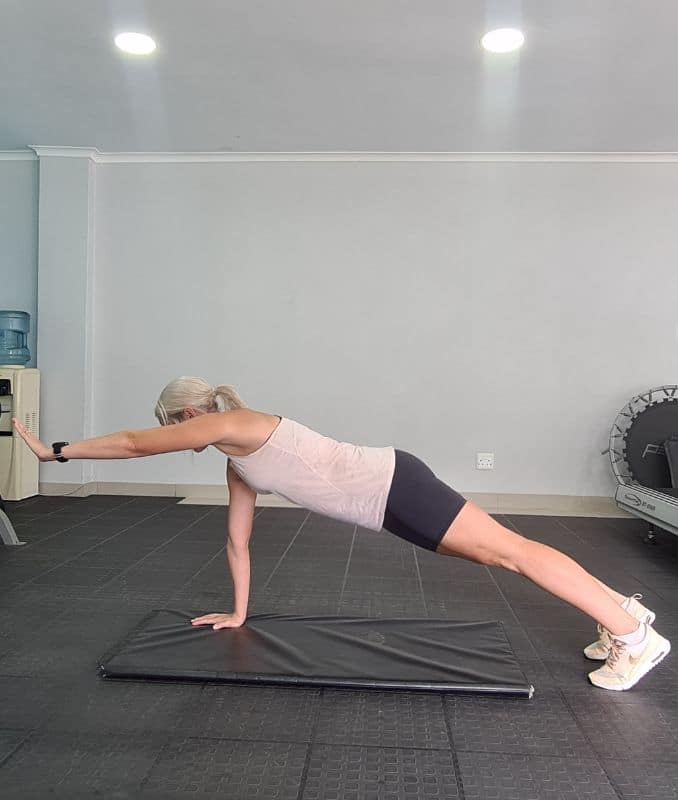 |
Full Plank with Reach
2. Plank Kick Back
Begin in an upright standing position with your hands against the wall. Move your feet back to increase the angle of your body, keeping your head, shoulders, hips, and legs in alignment. Tighten your core and place all of your weight on one leg. Kick one leg back, following with your opposite leg. Repeat the movement, alternating legs.
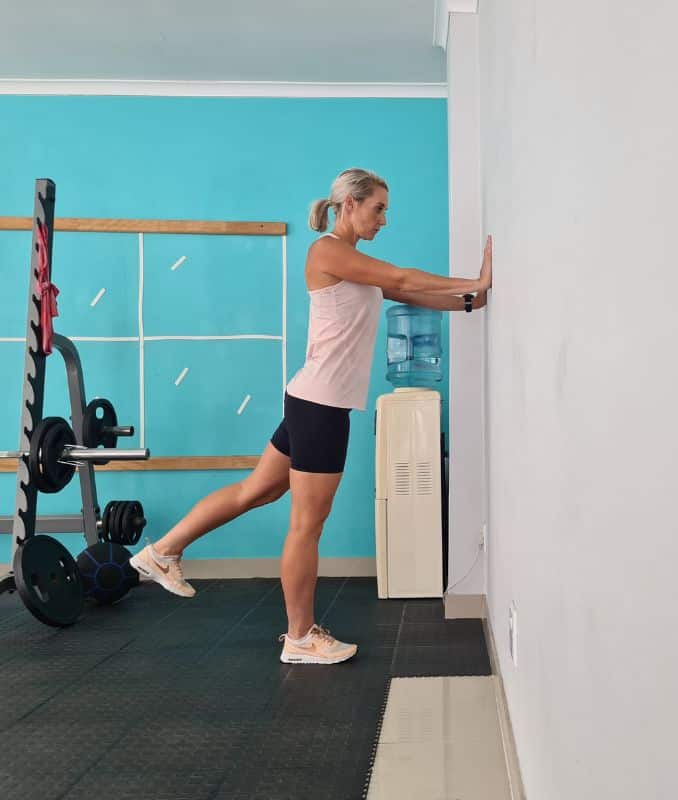 |
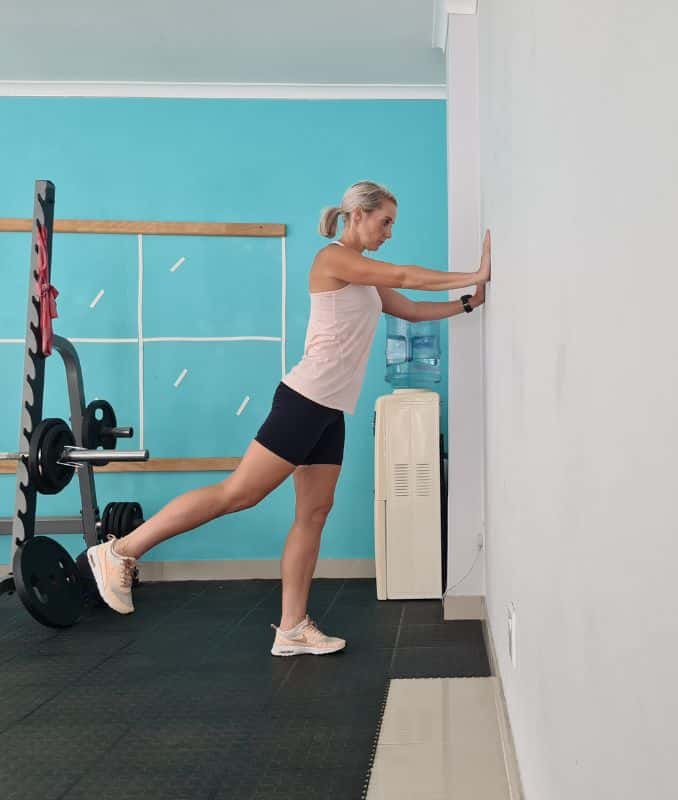 |
Plank Kick Back
Start with 1 set of 5-10 repetitions on each side.
Progression Exercise
Variation 1: Knee Plank with Kick Back
Begin in a 4–point position, with your knees under your hips and your hands beneath your shoulders. Move into a plank position, maintaining good alignment with your head, shoulders, hips, and knees. Tighten your core, and kick one leg towards the ceiling, following with your opposite leg. Repeat the movement, alternating legs.
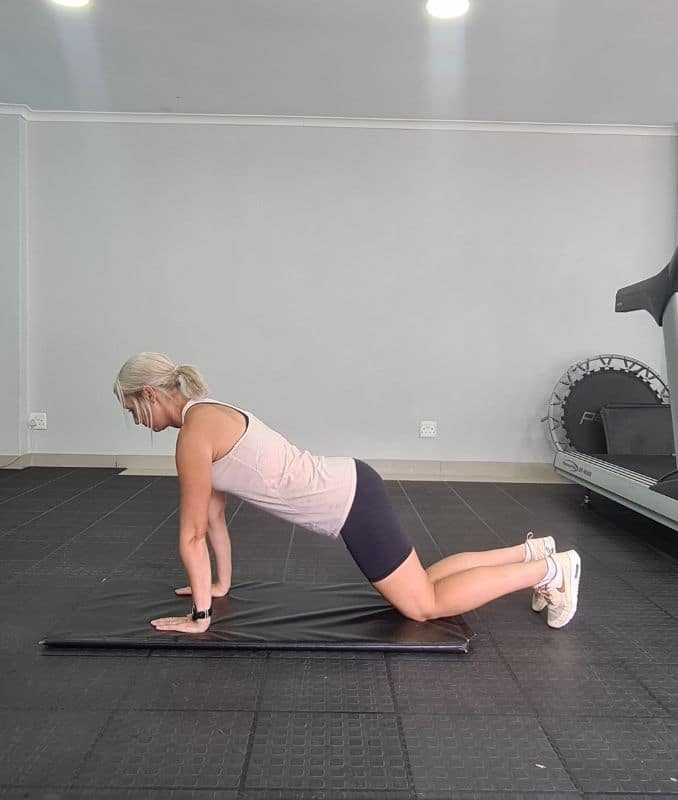 |
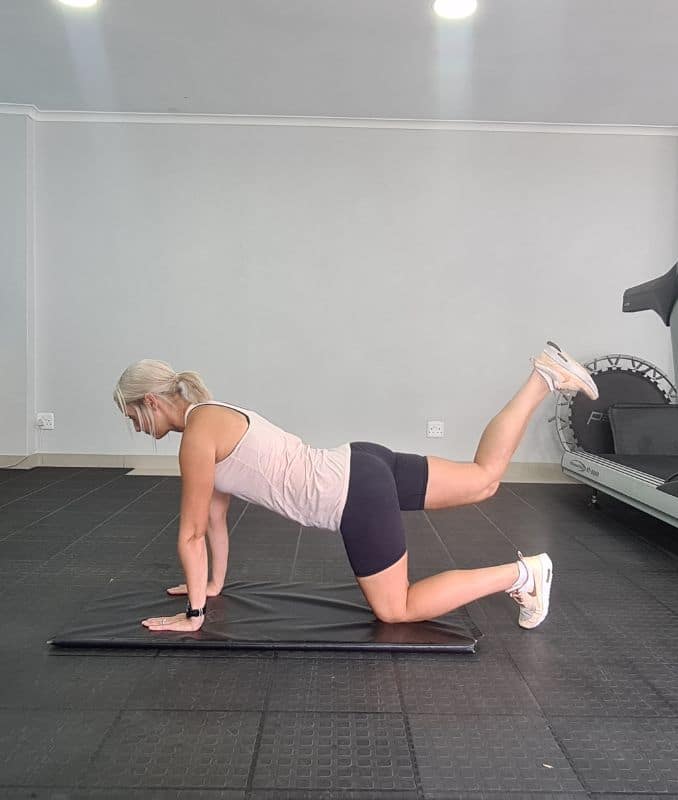 |
Knee Plank with Kick Back
Variation 2: Full Plank with Kick Back
Begin in a 4–point position, with your knees under your hips and your hands beneath your shoulders. Move into a plank position, maintaining good alignment with your head, shoulders, hips, and toes. Tighten your core, then lift one leg towards the ceiling, following with your opposite leg. Repeat the movement, alternating legs.
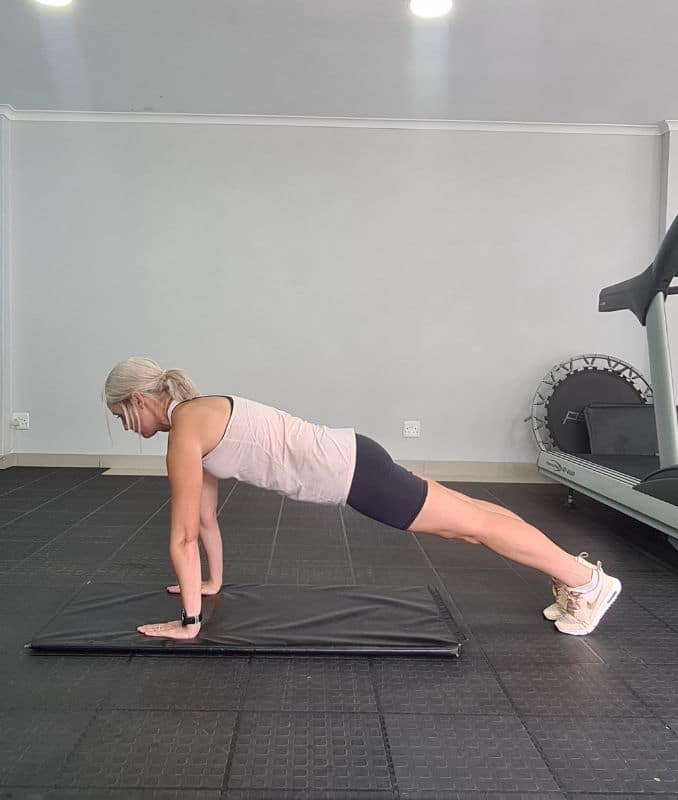 |
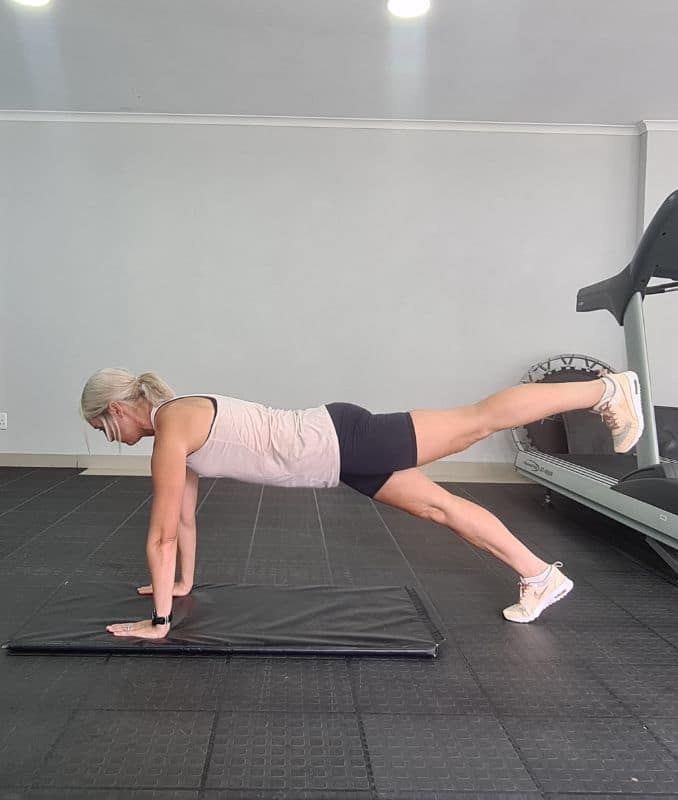 |
Full Plank with Kick Back
3. Split Squats with Bicep Curls
For this exercise, you can perform the movement as body weight or with dumbbells for resistance.
Begin in an upright standing position, keeping your head, shoulders, hips, and legs in alignment. Take a big step back with one leg. Tighten your core, lower your back knee to the ground, bringing your hands toward the floor. As you raise back up, curl your arms to get your hands to your shoulders. Repeat the movement on the opposite side.
 |
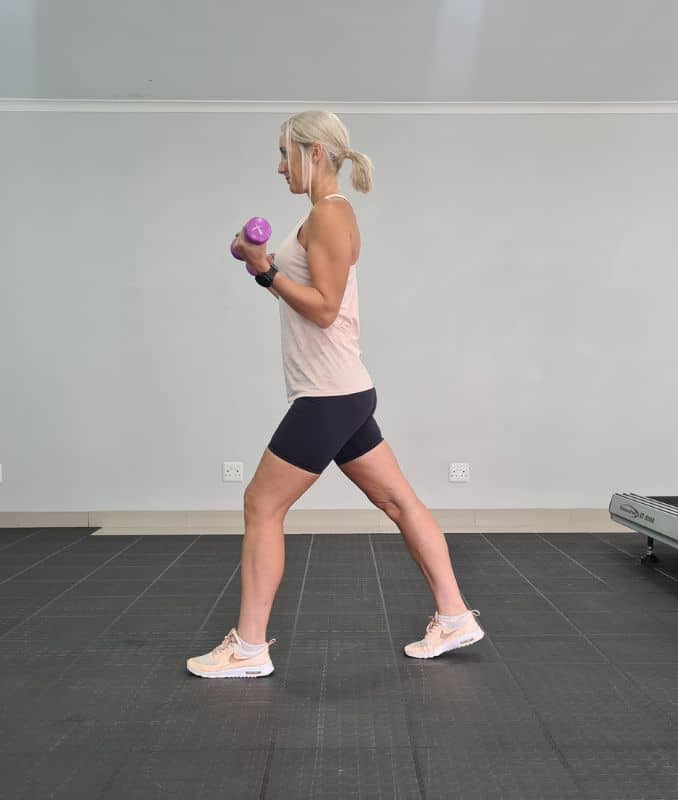 |
Split Squats with Bicep Curls
Start with 1 set of 5-10 repetitions on each side.
4. Squat to Press
For this exercise, you can perform the movement as a body weight or with a dumbbell for resistance.
Begin in an upright standing position with your feet shoulder-width apart, holding a dumbbell in both hands at chest height. Tighten your core, then bend through your hips and knees to move into a deep squat, ideally bringing your knees to a 90-degree angle. Raise back up and extend your arms overhead. Return to the starting position and repeat the movement.
 |
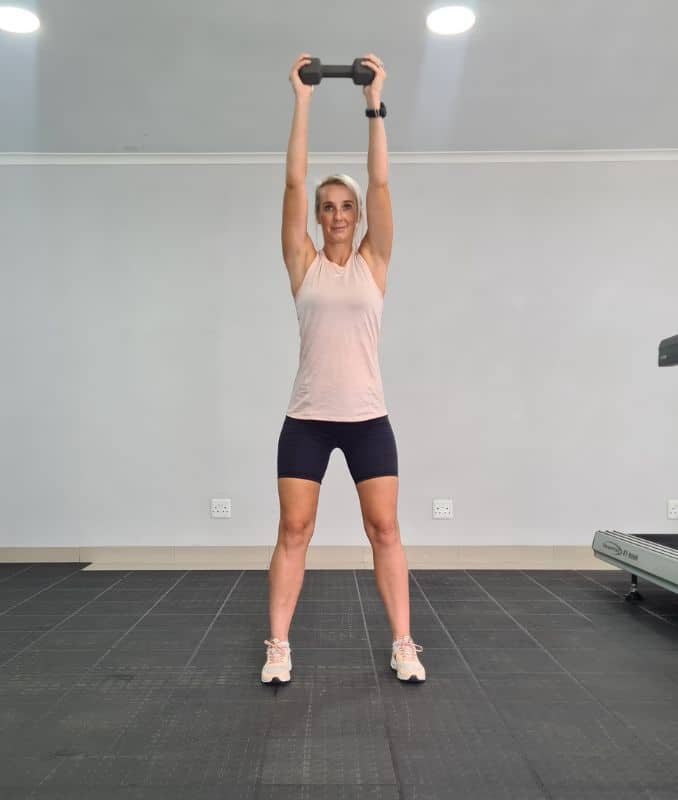 |
Squat to Press
Start with 1 set of 5-10 repetitions
5. Deadlift to Row
For this exercise, you can perform the movement as body weight or with dumbbells for resistance.
Begin in an upright position with your legs hip-width apart, holding a dumbbell in each hand. Maintain good alignment with your head, shoulders, hips, and legs. Tighten your core, then slightly bend your knees and pivot through your hips to bend your upper body forward, ideally parallel to the floor. Raise back up, then pull your arms around in a rowing motion, keeping your elbows 30 to 45 degrees away from your body. Repeat the movement.
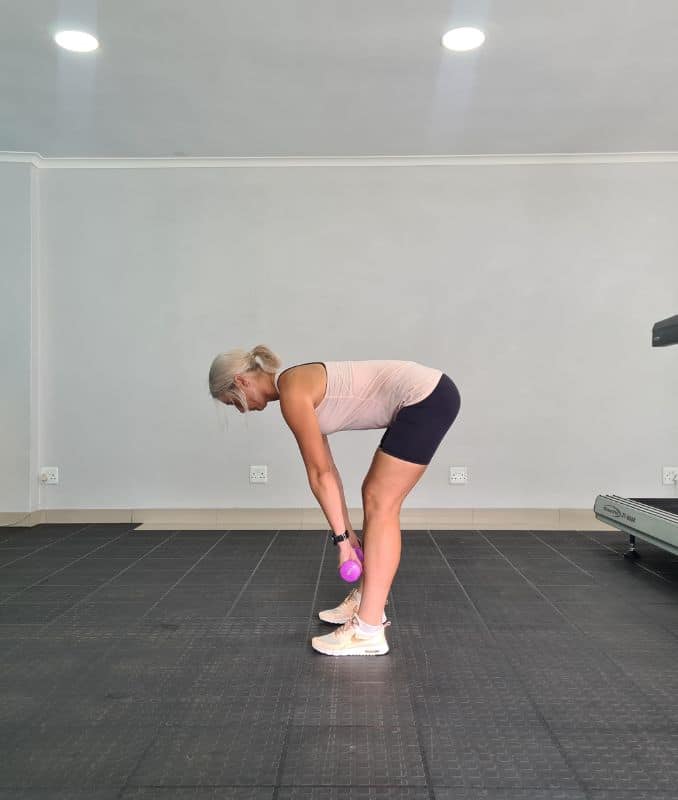 |
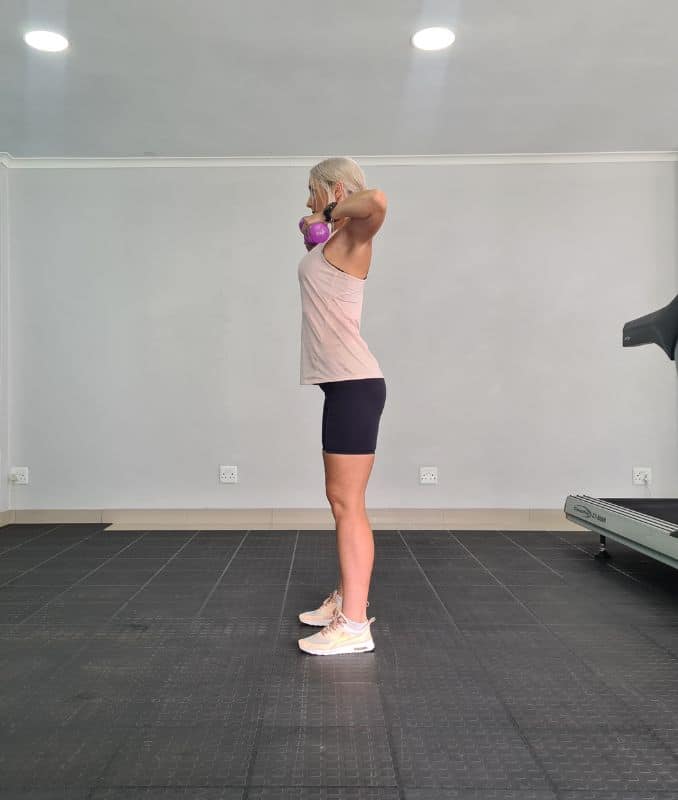 |
Deadlift to Row
Start with 1 set of 5-10 repetitions.
6. Sumo Squat Front Raise
For this exercise, you can perform the movement as a body weight or with a dumbbell for resistance.
Begin in an upright standing position with your legs slightly more than hip-width apart and your toes pointed outward. Tighten your core, bend your knees, and hinge through your hips to move into a deep squat, bringing your hands between your legs. Raise back up, then extend your arms in front of your body at shoulder height. Repeat the movement.
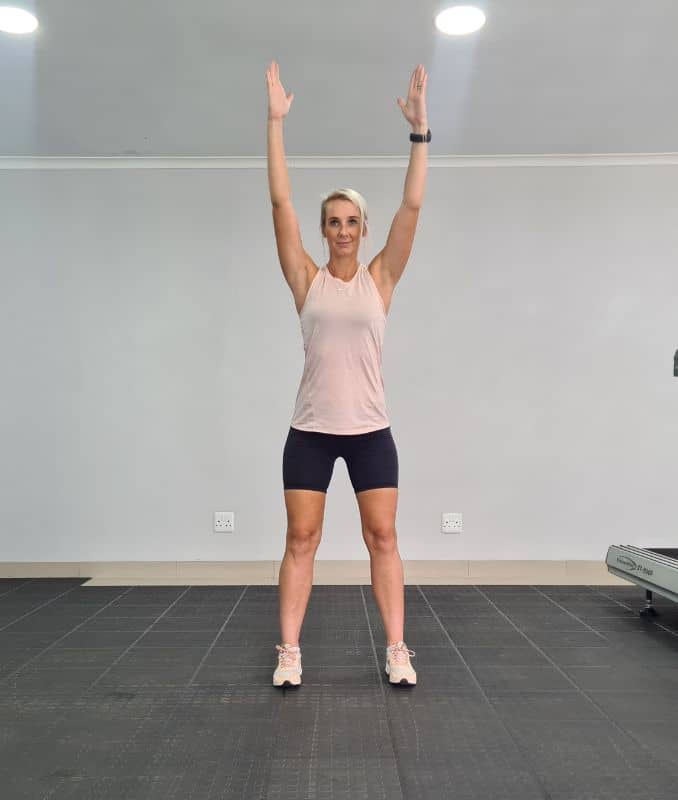 |
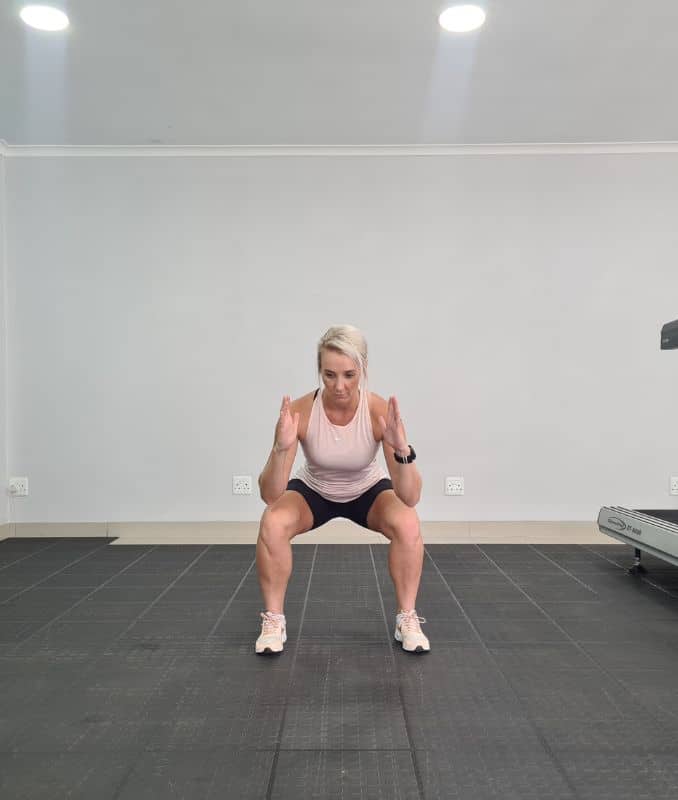 |
Sumo Squat Front Raise
Start with 1 set of 5-10 repetitions.
Stretching Exercises for Seniors
Stretching exercises are essential for seniors for several reasons. First, they help to improve the range of motion and flexibility. This can make it easier to do everyday tasks, like reaching for a can on a high shelf or bending down to pick up a grandchild. Stretching exercises can also help to reduce the risk of falls. Seniors with better balance and flexibility are less likely to fall and hurt themselves. Finally, stretching exercises can help to reduce pain and inflammation in the joints.
For seniors who have arthritis or other joint conditions, stretch exercises can be a great way to find relief. Seniors can do many stretching exercises, so it's important to find ones that work for you. If you have any pain or discomfort, stop and consult your doctor before continuing. But with a little effort, you can soon be on your way to feeling better and enjoying a more active lifestyle.
Try these simple stretching exercises below!
1. Neck Side Stretch
Begin in either an upright sitting or standing position, maintaining good alignment with your head, shoulders, and hips. Place your hands on your knees or at your sides. Slowly drop one ear down towards your shoulder, looking for a stretch along the side of your neck. Hold this position for 5-10 seconds. Return to the starting position and repeat the movement on the opposite side.
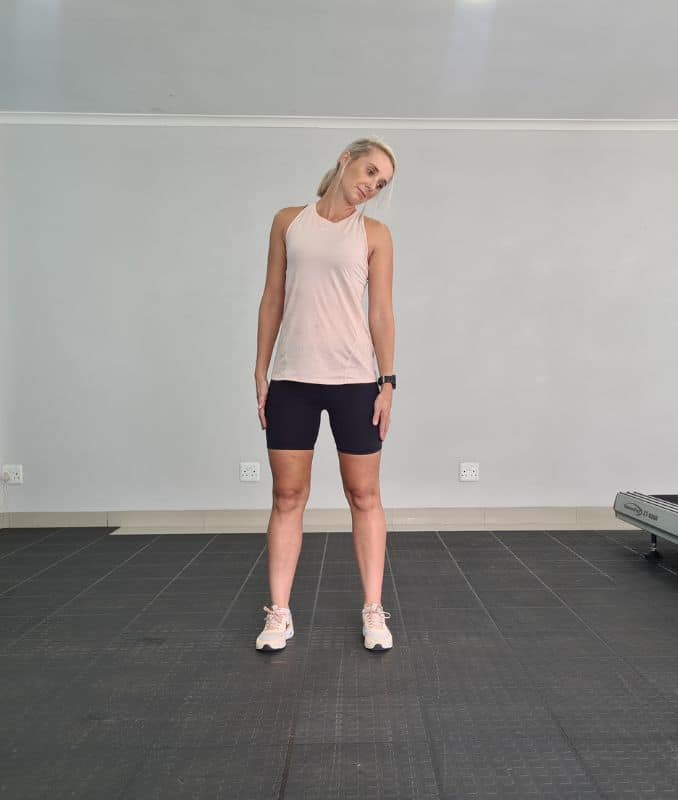
Neck Side Stretch
Start with 1 set of 2-3 repetitions on each side, holding for 5-10 seconds.
2. Shoulder & Upper Back Stretch
Begin in either an upright sitting or standing position, maintaining good alignment with your head, shoulders, and hips. Interlace your fingers behind your chair or back. Engage your core and lift your joined hands away from your body, bringing your head up. Hold this position for 5-10 seconds. Relax to return to the starting position and repeat the movement.
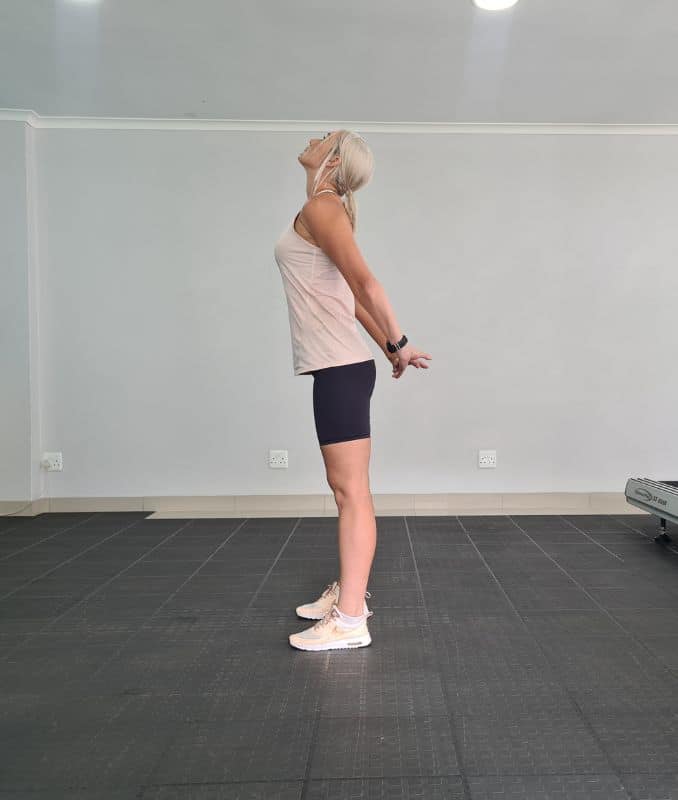
Shoulder & Upper Back Stretch
Start with 1 set of 2-3 repetitions, holding for 5-10 seconds.
3. Seated Hamstring Stretch
Begin in an upright standing or sitting position on the edge of a chair with your feet flat on the floor. Tighten your abdominal muscles and straighten one leg in front of your body. Hinge from your hips, then reaches for your toes with your hands, maintaining good alignment with your head, shoulders, and hips. Hold this position for 5-10 seconds, looking for a light stretch along the back of your leg. Return to the starting position and repeat the movement on the opposite side.
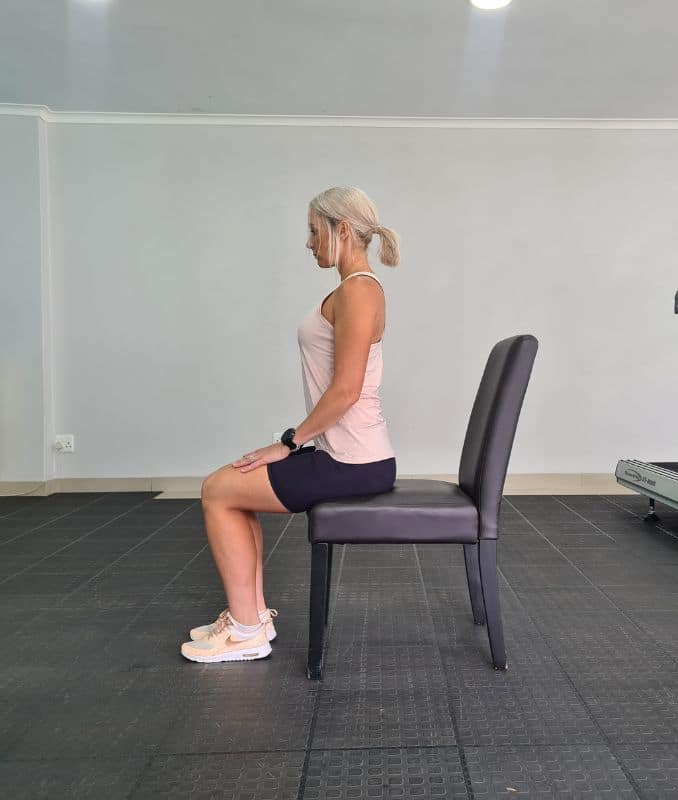 |
 |
Seated Hamstring Stretch
Start with 1 set of 2-3 repetitions on each side, holding for 5-10 seconds.
4. Quadriceps Stretch
For this exercise, you can either perform the movement as body weight or with the resistance band for resistance.
Begin in an upright sitting or standing position, with one hand on the back of the chair or wall for balance and maintaining good alignment with your head, shoulders, and hips. Tighten your core, then bring one heel up against your seat, holding your foot with your opposite hand. Hold this position for 5-10 seconds. Return to the starting position and repeat the movement on the opposite side.
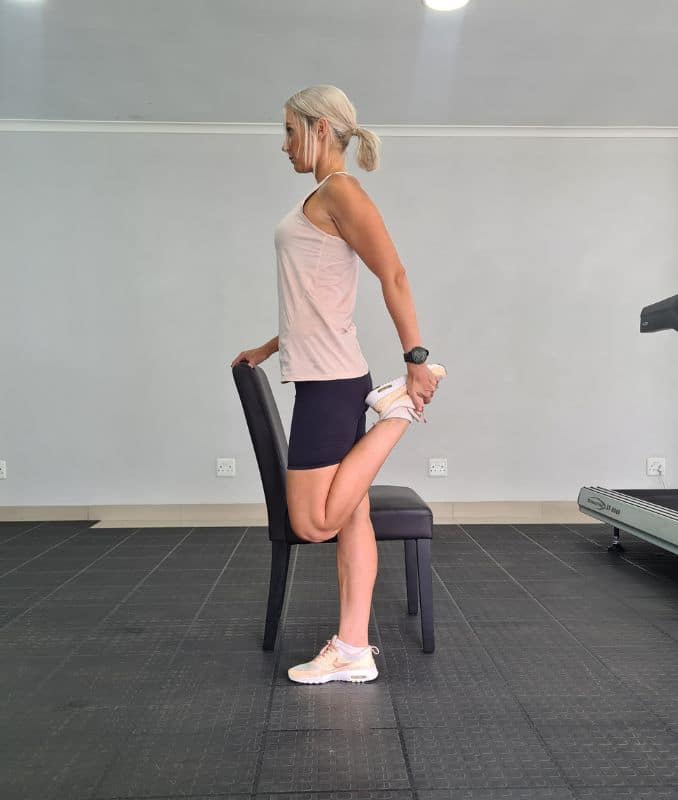
Quadriceps Stretch
Start with 1 set of 2-3 repetitions on each side, holding for 5-10 seconds.
5. Knees Side to Side
Lie on your back with your knees bent and feet flat on the floor. Place your arms out at your sides. Tighten your core and twist through your low back, pelvis, and spine to bring your bent knees to touch the floor on one side. Return to the starting position and repeat the movement on the opposite side.
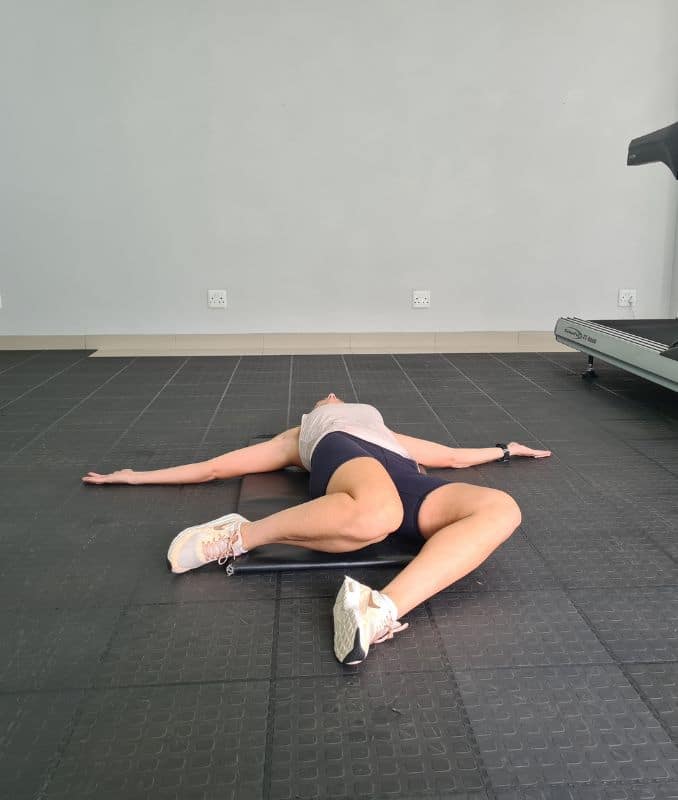 |
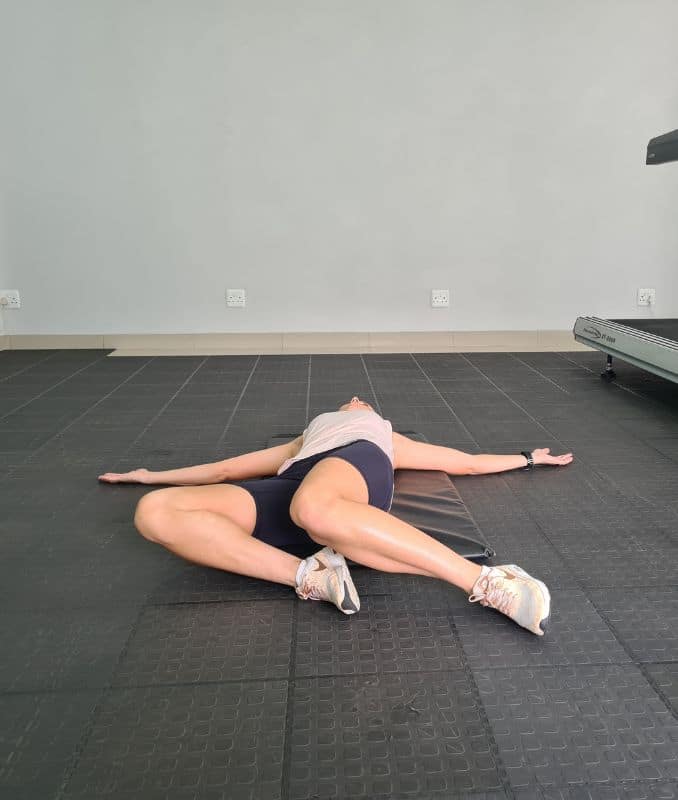 |
Knees Side to Side
Start with 1 set of 5-10 repetitions on each side.
6. Cat-Cow Pose
Begin in a 4-point position, with your hands underneath your shoulders and your knees underneath your hips. Contract your abdominal area. Slowly round out your mid back and drop your head towards the floor. Then alternate by bringing the lead-up and arching your middle back. Repeat the movement, alternating directions.
If you’re having difficulty getting on your knees, you can also perform the exercise in a standing position.
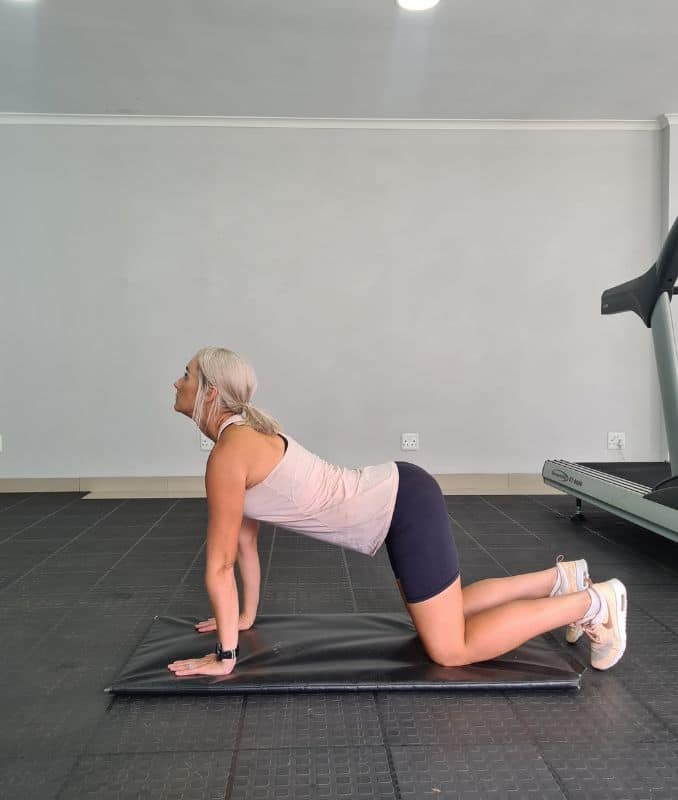 |
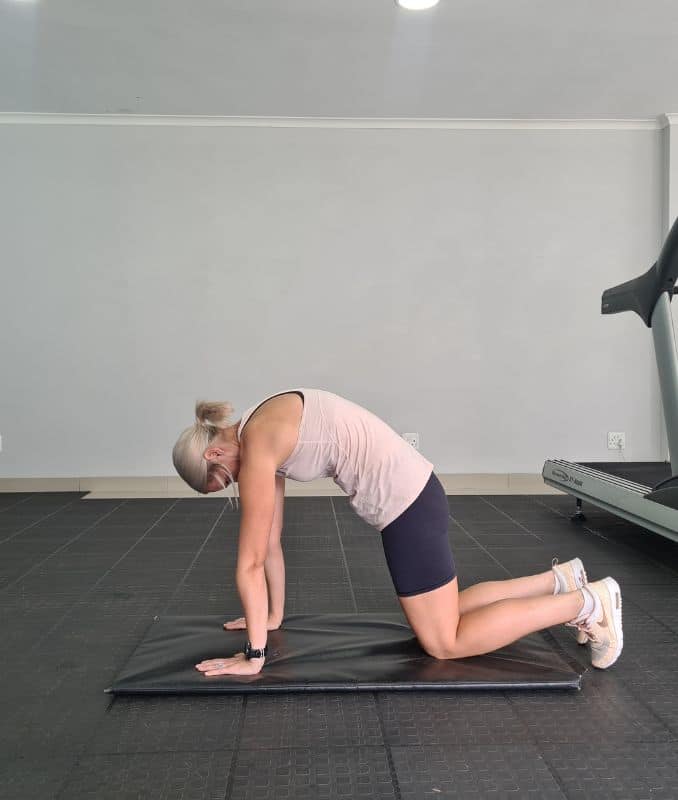 |
Cat-Cow Pose
Start with 1 set of 5-10 repetitions in each direction.
Exercise is one of the most important things we can do for our health, and it's something that we should all make time for. Training provides countless benefits, whether a brisk walk in the park or a full-blown workout at the gym. It helps to improve our cardiovascular health, strengthens our muscles and bones, and can even help to boost our mood. So no matter your age or fitness level, make sure to get moving and take care of your health! No matter how old we are or what level of exercise we can do, what matters is that we take time to take care of our health through movement.


